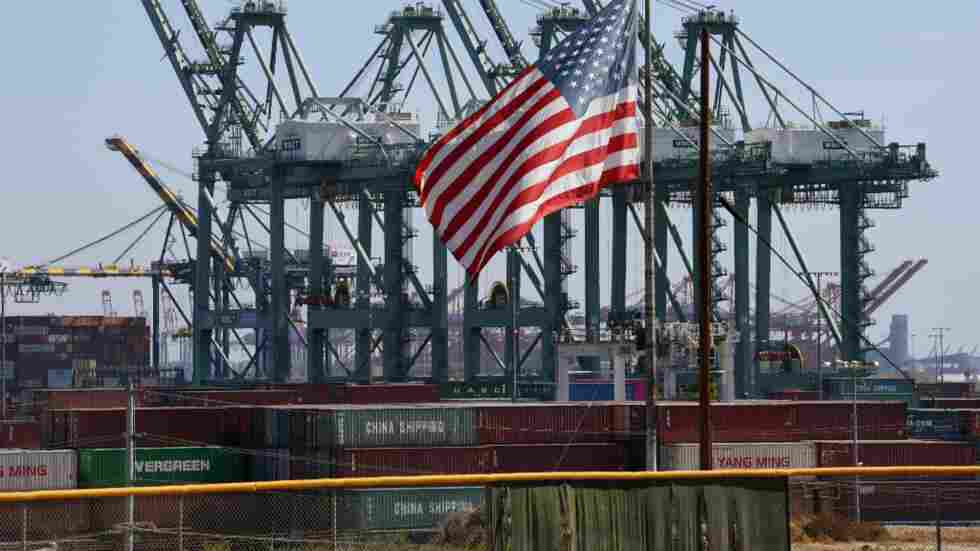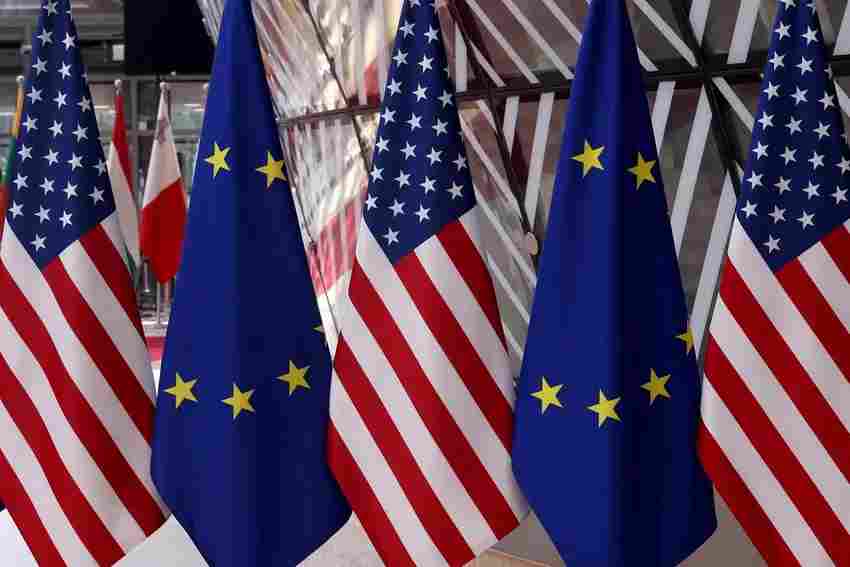
Brussels, Belgium (Enmaeya News) — European exports to the United States fell sharply in June, highlighting growing pressures on the continent’s trade amid continued U.S. tariffs under President Donald Trump. Analysts warn the decline could signal wider strains on global commerce.
According to Eurostat data reported by The Wall Street Journal, EU exports to the U.S.—spanning all 27 member states—dropped 10% from the previous year to roughly €40 billion ($46.8 billion), the lowest level since late 2023. The EU’s trade surplus with the U.S. fell to €1.8 billion ($2.1 billion) from €12.7 billion ($14.9 billion) in May.
The drop comes after a brief surge in March, when U.S. buyers stocked up ahead of tariff increases, sending exports to nearly €72 billion ($84.2 billion). Since April, however, shipments have declined sharply.
Tariff Deal Reached, Details Pending
Brussels and Washington reached an agreement in late July establishing a 15% baseline tariff on European goods. EU spokesperson Olov Gill said a joint statement “will outline the agreement soon,” though some elements remain under negotiation.
Despite mounting pressure, the EU has paused plans to retaliate with its own tariffs, suspending a six-month package initially prepared in response to U.S. measures imposed in April.
Germany, Chemicals Hit Hardest
The decline in exports is concentrated in chemicals, a critical sector for many European economies. Germany, Europe’s industrial powerhouse, saw a notable reduction in shipments to the U.S., directly affecting factory output and slowing overall economic growth.
A strong euro has compounded the problem by making European goods less competitive abroad.
Global Trade Chills Beyond the U.S.
The EU’s export slump is not limited to the United States. Shipments to China also fell year-on-year, signaling broader cooling in global trade.
Containers of Danish shipping company Maersk stacked at a Frankfurt transshipment station in April 2025 illustrate ongoing logistical and market pressures. German investor sentiment that month fell to its lowest level since Russia’s invasion of Ukraine, dropping 65.6 points to -14, according to the ZEW institute.
Economists caution that external trade conditions remain challenging. Ralph Solvein of Commerzbank said Europe’s trading environment “remains below normal levels.” WTO Director-General Ngozi Okonjo-Iweala added that “the full impact of recent tariffs is still unfolding.”
Eurozone GDP showed modest resilience, growing 0.1% in the second quarter. Still, Carsten Brzeski of ING Bank noted it is “difficult to envision exports returning as a strong driver of European growth.”
The Wall Street Journal concludes that Europe faces continued pressure from U.S. protectionism, a strong euro, and weakening global demand, with the full economic shock yet to come.







